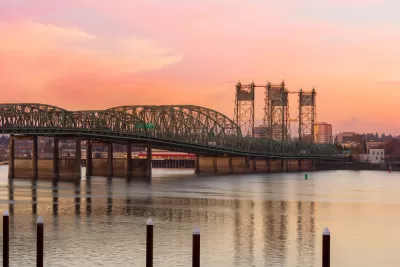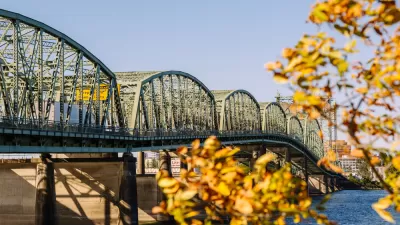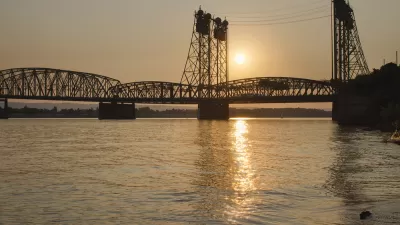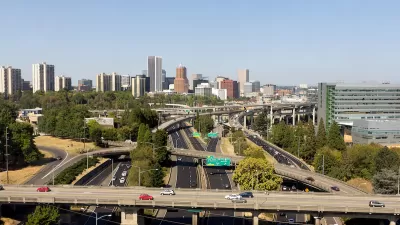2021 will be a big year for planning on the Interstate Bridge Replacement project, née Columbia River Crossing, that will connect Washington and Oregon across the Columbia River.

Officials from the states of Washington and Oregon are dusting off ambitions to replace an Interstate 5 bridge across the Columbia River. A previous version of the plan, known as the Columbia River Crossing, was killed in 2014, but not before both states spent $190 million over a decade of work on the project.
Planetizen has used the "back from the dead" hook in the headline for this article on more than once occasion regarding this project, first as officials began to re-examine and re-advocate for the project in early 2017. Oregon took a substantive step toward rejuvenating the project in August 2019. The project was on the fast track by September 2019.
The story in 2020 is told by Ryan Packer, who first details the rare collection of opposition forces that killed the project in 2015 and lists the key features of the Columbia River Crossing project of the previous decade, which would have spent $3.4 billion to increase the freeway's capacity from six to ten lanes and add seven "optimized" interchanges on either side of the river.
The project now has a new name, the Interstate Bridge Replacement (IBR) program, but it's cost estimates are still based on the old project, reports Packer, so there are still numerous questions about whether the project will expand the freeway, where, and by how much. Packer's deep reporting offers insight from leading officials about which way the project might be headed in this new iteration.
Packer notes that the question of whether the states will have to pay $140 million back to the federal government is motivating some of the action on the project, positioning 2021 as a key year for observers to monitor the project.
FULL STORY: Columbia River Crossing Freeway Project Is Back

Alabama: Trump Terminates Settlements for Black Communities Harmed By Raw Sewage
Trump deemed the landmark civil rights agreement “illegal DEI and environmental justice policy.”

Study: Maui’s Plan to Convert Vacation Rentals to Long-Term Housing Could Cause Nearly $1 Billion Economic Loss
The plan would reduce visitor accommodation by 25% resulting in 1,900 jobs lost.

Why Should We Subsidize Public Transportation?
Many public transit agencies face financial stress due to rising costs, declining fare revenue, and declining subsidies. Transit advocates must provide a strong business case for increasing public transit funding.

Wind Energy on the Rise Despite Federal Policy Reversal
The Trump administration is revoking federal support for renewable energy, but demand for new projects continues unabated.

Passengers Flock to Caltrain After Electrification
The new electric trains are running faster and more reliably, leading to strong ridership growth on the Bay Area rail system.

Texas Churches Rally Behind ‘Yes in God’s Back Yard’ Legislation
Religious leaders want the state to reduce zoning regulations to streamline leasing church-owned land to housing developers.
Urban Design for Planners 1: Software Tools
This six-course series explores essential urban design concepts using open source software and equips planners with the tools they need to participate fully in the urban design process.
Planning for Universal Design
Learn the tools for implementing Universal Design in planning regulations.
Caltrans
Smith Gee Studio
Institute for Housing and Urban Development Studies (IHS)
City of Grandview
Harvard GSD Executive Education
Toledo-Lucas County Plan Commissions
Salt Lake City
NYU Wagner Graduate School of Public Service





























